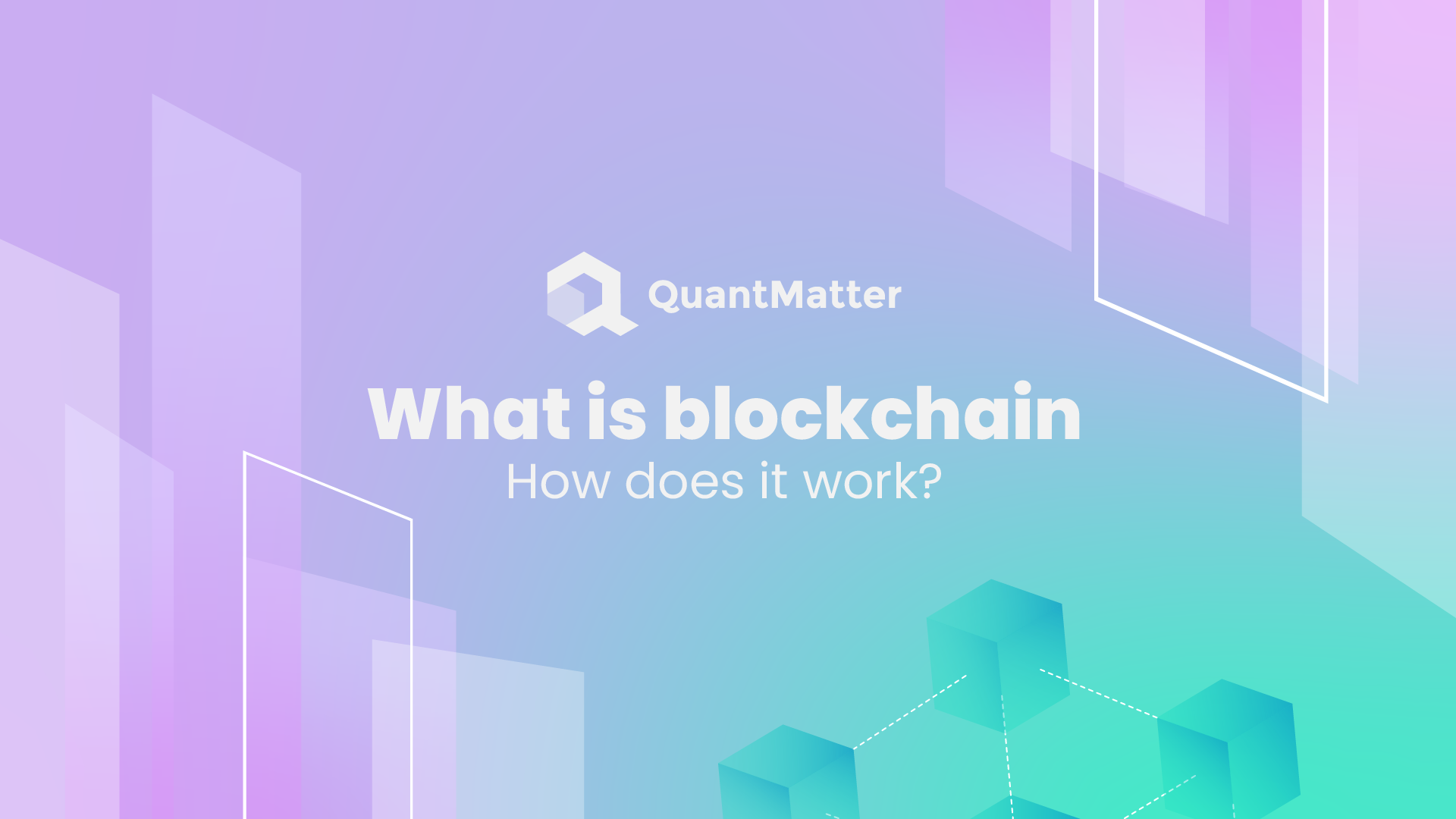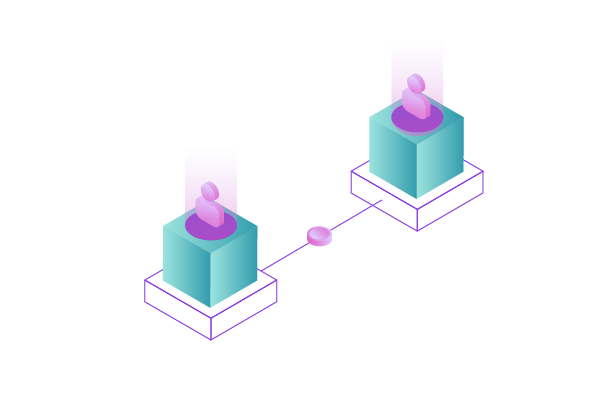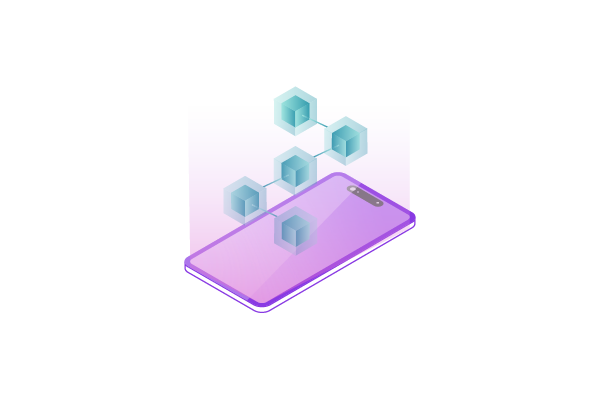
Have you ever heard the term ‘blockchain’ and wondered what it’s all about? You’re not alone. In today’s digital age, blockchain is a buzzword that’s reshaping industries, yet many are still in the dark about its true essence. Let’s embark on a journey to demystify this groundbreaking technology.
Blockchain, in its simplest form, is a digital ledger. But it’s not just any ledger; it’s decentralized, secure, and transparent. Imagine a record-keeping system where every transaction is verified by a network of computers. Intrigued? Let’s dive deeper.
The Basics of Blockchain

Blockchain is often associated with cryptocurrencies like Bitcoin, but its applications go far beyond that. At its core, a blockchain is a chain of blocks. Each block contains a set of transactions. Once a block is filled with transactions, a new block is created and linked to the previous one, forming a chain.
This chain is maintained across multiple computers or nodes. When a new transaction is added, it’s broadcast to all nodes. These nodes then validate the transaction. Once validated, it’s added to the block. This decentralized nature ensures that no single entity has control over the entire blockchain.
Moreover, once a transaction is added to the blockchain, it’s nearly impossible to alter. This immutability is one of the reasons why blockchain is considered so secure. Every block has a unique code called a ‘hash’, and any change in the block alters this hash, making tampering evident.
Also Read: 12 Best Quantitative Trading Firms in 2023
How Does Blockchain Work?

To truly grasp the workings of blockchain, it’s essential to understand its three primary components: blocks, nodes, and miners.
1. Blocks
- Structure: A block is like a page in a ledger or a record book. Each block contains a set of transactions, a timestamp, and crucially, two significant pieces of information: its unique code (hash) and the hash of the previous block in the chain.
- Hash: The hash is a complex alphanumeric code generated by a cryptographic function. It’s unique to the contents of the block. If even a single character in the block changes, the hash will change dramatically, making any tampering evident.
- Linkage: The inclusion of the previous block’s hash creates an unbreakable link in the chain. This ensures that blocks remain in order and that previous transactions cannot be altered without changing the entire chain’s subsequent blocks.
2. Nodes
- Definition: Nodes are individual computers or servers that participate in the blockchain network. They store, spread, and preserve the blockchain data, ensuring its decentralization and security.
- Validation: Whenever a new transaction is initiated, it’s broadcast to the network. Nodes then validate the transaction against the blockchain’s history to ensure its legitimacy.
- Full Nodes vs. Lightweight Nodes: Not all nodes carry the entire blockchain. Full nodes store the complete history, while lightweight or SPV (Simplified Payment Verification) nodes store only a subset, relying on full nodes for complete transaction validation.
3. Miners
- Role: Miners are specialized nodes that perform the task of validating and recording new transactions onto the blockchain. They do this by solving complex mathematical puzzles.
- Mining Process: When several transactions are initiated, they go into a memory pool (or mempool). Miners select transactions from this pool, usually prioritizing those with higher fees, and then attempt to solve a cryptographic puzzle that requires a lot of computational power.
- Rewards: Once a miner successfully solves the puzzle, the new block is added to the blockchain, and the miner is rewarded with a certain amount of cryptocurrency. This reward serves two purposes: it issues new coins (in the case of Bitcoin) and incentivizes miners to spend computational resources to keep the network secure.
- Security: The mining process ensures that only one version of the truth exists. If someone tries to alter a transaction, they’d need to redo all the work of the block and all the blocks after it, which is computationally impractical.
4. Consensus Mechanisms
- Purpose: With multiple nodes validating transactions, a system is needed to ensure that all nodes agree on a single version of truth. This system is the consensus mechanism.
- Proof of Work (PoW): Used by Bitcoin, PoW requires miners to solve complex puzzles, ensuring that creating a new block requires computational effort, making malicious attempts expensive and impractical.
- Proof of Stake (PoS): In PoS, validators are chosen to create new blocks based on the number of coins they hold and are willing to “stake” or lock up as collateral. It’s seen as a less energy-intensive alternative to PoW.
- Other Mechanisms: There are other consensus mechanisms like Delegated Proof of Stake (DPoS), Proof of Authority (PoA), and more, each with its advantages and use cases.
Why is Blockchain Revolutionary?
Blockchain’s decentralized nature is a game-changer. Unlike traditional systems where a central authority (like a bank) verifies transactions, in blockchain, this verification is done by a network of nodes. This decentralization reduces the risk of fraud and hacking.
Transparency is another key feature. Since every transaction is recorded on the blockchain and is visible to all nodes, it’s difficult for any entity to manipulate the data without others noticing.
Lastly, blockchain’s immutability ensures that once data is added, it can’t be changed without altering the entire chain. This makes it a trustworthy and reliable system for various applications beyond just cryptocurrency.
Real-world Applications of Blockchain

While cryptocurrency is the most famous application, blockchain’s potential spans various sectors.
1. Supply Chain
Traceability and Authenticity: One of the biggest challenges in the supply chain is tracing products back to their origin. Blockchain provides a transparent and immutable ledger, allowing every product’s journey to be recorded from its source to the end consumer. This ensures that products are genuine, and it can help in identifying and eliminating counterfeit goods.
Efficiency and Cost Reduction: Traditional supply chains involve multiple intermediaries, which can slow down processes and increase costs. Blockchain can automate and streamline these processes, reducing the need for intermediaries and manual paperwork. This can lead to faster deliveries and reduced costs.
Accountability: With every transaction being recorded on the blockchain, all parties in the supply chain can be held accountable. This can reduce fraud, theft, and mismanagement.
2. Healthcare
Secure Patient Records: Healthcare institutions often struggle with maintaining secure and unified patient records. Blockchain can store patient data securely, ensuring that only authorized personnel can access it. This can reduce data breaches and unauthorized access.
Drug Traceability: Counterfeit drugs are a significant concern in the healthcare industry. Blockchain can track drugs from manufacturers to patients, ensuring that they are genuine and safe.
Research and Clinical Trials: Blockchain can provide a transparent and tamper-proof platform for recording clinical trial data, ensuring the integrity of research and fostering trust in the results.
3. Real Estate
Transparent Transactions: Real estate transactions involve multiple parties, including buyers, sellers, agents, and banks. Blockchain can record every transaction transparently, ensuring that all parties have a clear understanding of the deal.
Reduced Fraud: Property fraud, such as forging documents, is a concern in the real estate sector. Since data on the blockchain is immutable, it’s nearly impossible to forge or alter property documents.
Efficient Property Management: For rental properties, blockchain can automate and streamline processes like tenant verification, rent collection, and maintenance management.
4. Voting
Secure Voting Systems: Traditional voting systems are susceptible to manipulation and fraud. Blockchain can provide a secure platform where each vote is recorded transparently and immutably, reducing the chances of vote tampering.
Remote Voting: Blockchain can facilitate remote voting, allowing citizens to cast their votes without physically being present at polling stations. This can increase voter turnout and make voting more accessible.
Transparency and Trust: With every vote being recorded on a public ledger, citizens can verify that their votes were counted correctly, fostering trust in the electoral process.
Also Read: What Is a Quant? Everything about Quantitative Analyst
Conclusion
Blockchain is undeniably one of the most revolutionary technologies of our time. Its decentralized, transparent, and immutable nature makes it a potent tool for various applications, far beyond the realms of cryptocurrency. As we continue to explore its potential, one thing is clear: blockchain is here to stay.
So, the next time someone mentions ‘blockchain’, you won’t just nod along. You’ll understand its essence, its workings, and its immense potential in reshaping our digital future. Welcome to the blockchain era!

I'm Carina, a passionate crypto trader, analyst, and enthusiast. With years of experience in the thrilling world of cryptocurrency, I have dedicated my time to understanding the complexities and trends of this ever-evolving industry.
Through my expertise, I strive to empower individuals with the knowledge and tools they need to navigate the exciting realm of digital assets. Whether you're a seasoned investor or a curious beginner, I'm here to share valuable insights, practical tips, and comprehensive analyses to help you make informed decisions in the crypto space.
- Carinahttps://quantmatter.com/author/carina/
- Carinahttps://quantmatter.com/author/carina/
- Carinahttps://quantmatter.com/author/carina/
- Carinahttps://quantmatter.com/author/carina/
